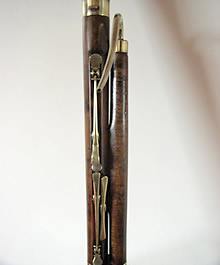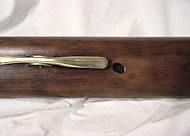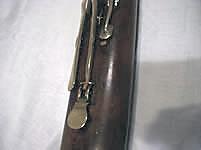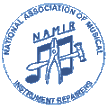Restoration
The restoration of 18th and 19th century instruments requires the skills of a maker rather than a repairer. In many restoration cases there are missing or damaged mounts, rings, saddles and headjoint crowns
Any cracks in the wood firstly have to be pinned, filled and dressed. In most restoration cases some or all of the trim is either missing or damaged - this can include mounts, headjoint crowns etc. The material used here produces one immediate problem - although it was quite acceptable to use ivory 200 years ago, today it is not, so alternatives have to be found. One source of material is actually to use old billiard balls - a form of recycling ivory. The last resort is to use man-made alternatives .
Damaged keywork has to be repaired - usually by hard soldering broken keys, and any missing keys have to be made from scratch. Keys are usually made of either brass or silver, and have to be matched to the existing keywork on the instrument. Missing blocks on which the keywork is mounted is also a problem facing the restorer of old instruments. Usually a small piece of wood, again matching the original, has to be grafted into place to take the original, or copied key.
Naturally, during this process the instrument is thoroughly cleaned and the wood oiled. Joints are re-lapped and the instrument returned to its owner in a healthy state.
Some instruments I restore are of great historical value, whilst others are of value only to the owner, but they all provide rewarding work.
| Pictures of a bassoon restored in January 2003. The instrument was built by Milhouse (c1780-1835) which has had many alterations and additions over the years. The instrument is stamped "Milhouse Newark", whilst the bell which is marked "Goulding London" and is therefore not original, but it is contemporary. |

Long joint, wing joint and crook |

Butt Joint - E hole and thumb key |

Butt joint - low F, F# & G# keys |
The bassoon had been covered in a dark red lacquer as some modern German bassoons are. These photographs were taken after the lacquer had been stripped and the instrument repolished. The maker's stamp only became apparent once the lacquer had been removed.
All pads have needed replacing as have some missing screws. Cracks have been filled and the joints relapped with linen thread.
|

